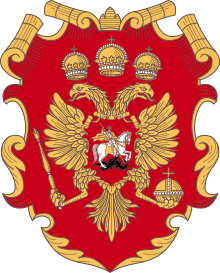This article includes a list of general references, but it lacks sufficient corresponding inline citations. (January 2013) |
| Земский собор | |
 | |
| Agency overview | |
|---|---|
| Formed | 1549 |
| Preceding agency | |
| Dissolved | 1684 |
| Superseding agency | |
| Headquarters | Moscow Kremlin |
| Parent department | Boyar duma |
The Zemsky Sobor (Russian: зе́мский собо́р, IPA: [ˈzʲemskʲɪj sɐˈbor], lit. 'assembly of the land') was a parliament of the Tsardom of Russia's estates of the realm active during the 16th and 17th centuries.
The assembly represented Russia's feudal classes in three categories: Nobility and the high bureaucracy, the Holy Sobor of the Orthodox clergy, and representatives of "commoners" including merchants and townspeople.[1] Assemblies could be summoned either by the tsar, the patriarch, or the boyar duma, to decide current agenda, controversial issues or enact major pieces of legislation.[2]
- ^ Acton, Edward (2014-09-19). Russia. doi:10.4324/9781315844770. ISBN 9781315844770.
- ^ Krebs, H. (1905-03-11). "Zémstvo and Zemsky-Sobór". Notes and Queries. s10-III (63): 185. doi:10.1093/nq/s10-iii.63.185c. ISSN 1471-6941.